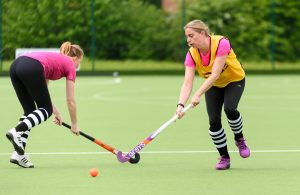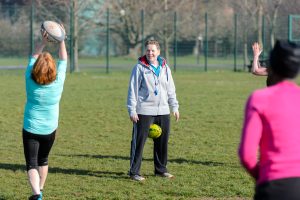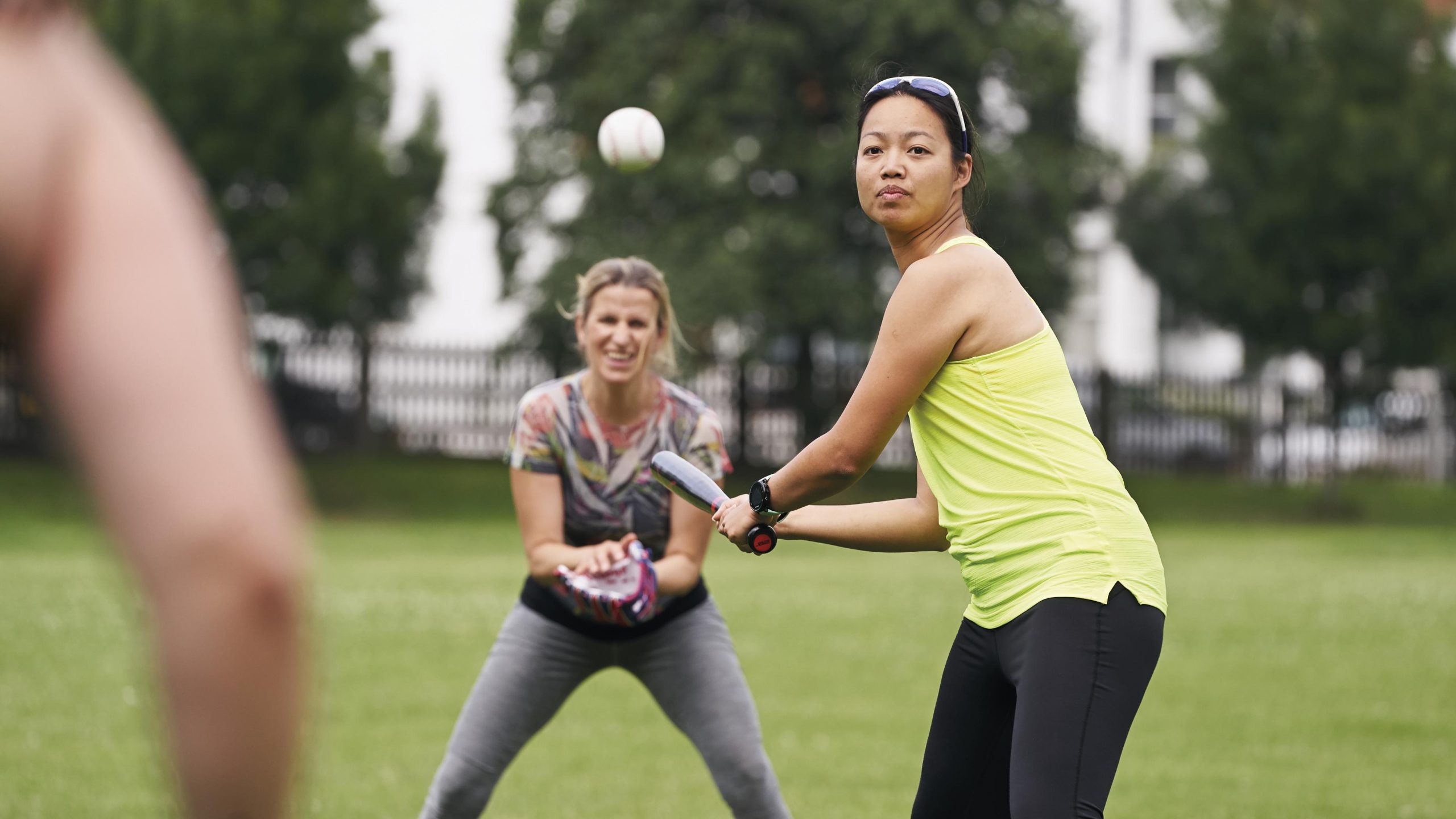What is the Government’s new sport strategy?
This week, the Government published its updated sport strategy; the first update since 2015. The new strategy sits alongside the updated School Sport and Activity Plan, published in July.
The new strategy aims to increase participation and the number of people meeting the UK Chief Medical Officer’s activity guidelines of 150+ minutes of moderate activity a week for adults and 60 minutes of activity a day for children. The strategy aims to:
- Get an additional 3.5 million people active, including 1 million children, across the UK by 2030.
- Improve the way ‘integrity issues’ – including discrimination, doping and corruption – in sport are tackled.
- Improve the financial and environmental sustainability of the sector.
- Continue the support for UK cities and venues hosting major sporting events.
- Set up a new cross-government National Physical Activity Taskforce to drive the strategy on and track progress against its targets.

At Women in Sport, our vision is that no one is excluded from the joy, fulfilment and lifelong benefits of sport. Our purpose is to create lasting positive change for women and girls in sport and society. After such a brilliant summer of sport – so much of it driven by amazing women – it is positive to see the Government recognising the value of sport and committing to making the nation more active.
Making sport and physical activity a cross-governmental priority gives this strategy the opportunity to make an impact on the nation’s health. The joined-up approach across Government to improving health, wellbeing and economic productivity, and the understanding that sport can play a vital role in this, is extremely welcome. The emphasis on specific targets, better data collection and monitoring of initiatives will back this up. The introduction of the new Taskforce is also a positive step, providing a new body to hold both Government and the sector to account. Its membership must be 50% female.
There needs to be more recognition of gendered health inequalities and how inequalities in access to sport contribute to these. It is unacceptable that we continue to see anxiety spiralling upwards, along with self-harm and eating disorders, in teenage girls or that women over 50 are twice as likely to suffer a fracture because of osteoporosis than men of the same age. Much more needs to be done to close the gender activity gap and get more women and girls active. As a longstanding research and advocacy charity, we look forward to contributing to ambitious thinking about how the system needs to change to allow girls and women their rightful place in sport and exercise.
The gender activity gap
Women and girls are less active at every stage of their lives. The gender activity gap is wider than it’s been since reporting began, with just 61% of women meeting the recommended 150+ minutes of activity a week. When we breakdown activity levels for women by ethnicity the picture is stark. Just 51% of Black women are ‘active’ compared with 62% of Black men, a gender gap of 11%. Asian women are also far less active than men of the same ethnicity and compared with White British women.
Female participation in sport has been slower to recover since the pandemic, in part due to the fact indoor sports like netball were stopped for much longer than outdoor sports like football. Inactivity levels among women have also increased, with 27% of women doing less than 30 minutes of activity a week, 3% higher than men. There is a particular gap around team sport, with just 3% of women taking part. When it comes to children, a staggering 22% fewer girls than boys take part in team sport.
-
Just 61
%
of women meet the recommended weekly activity guidelines
Sport England Active Lives
-
Only 51
%
of black women are 'active' compared with 62% of black men
Sport England Active Lives
What the new strategy means for women and girls’ activity levels
It is welcome that one of the headline aims of the new strategy is to increase activity levels across the population. It is even more welcome that there is a specific target for increasing women’s activity levels: an extra 1.25million women achieving the UK Chief Medical Officer’s activity guidelines by 2030, along with much more robust monitoring and evaluation to see which initiatives aimed at women are working. Given our deep understanding of the impact of gender stereotyping, it is disappointing there is no equivalent target for girls. We welcome the Government’s recognition that sport and physical activity is important for women and girls and that it can change lives for the better.

However, the strategy could go further in tackling the root causes of the issues that women and girls face. We know that simply encouraging women and girls to play sport isn’t enough. The issue is not that simple. Apart from fewer opportunities, deep rooted gender stereotypes tell women and girls that sport is not for them from a frighteningly young age and reinforces these messages throughout their lives. We have to smash these stereotypes to close the gender activity gap, and we have to smash them at a very young age. As we said in our response to the School Sport and Activity Plan, we have to get school sport right for girls.
We welcome the focus on access to facilities and informal spaces to be active in the strategy and the commitment to develop a new National Vision for Facilities by the end of the year. It is vital that this Vision understands and prioritises the needs of women and girls. We know that for women and girls it is not simply a case of ‘build it and they will come’. The new document should be bolder on measures to ensure women and girls have meaningful access to facilities. Facilities funded by central government, local authorities, or organisations receiving government funds should focus on the needs of women and girls, to make sure they are benefitting equally. We believe the ambition should ultimately be that as the demand grows women and girls are accessing 50% of the time available across new and existing facilities, particularly during peak times. The Sport Strategy’s emphasis on improving data, metrics and monitoring impact provides the opportunity to do this.
The commitment to continue to promote the UK as a home for major sporting events is to be welcomed, but we know this does not directly translate to activity levels increasing. We know that these events and the success of British teams and athletes is often only an inspiration for those that are already ‘sporty’. Our latest Dream Deficit research, published in the aftermath of the Lionesses winning the Euros at home, showed that whilst 70% of sporty girls dream of reaching the top in sport only 31% of all girls share that ambition. And, in either case, boys are still a long way ahead.
-
70
%
of sporty girls dream of reaching the top in sport
-
But only 31
%
of all girls share that ambition
Tackling abuse and misogyny in sport
Whilst it is positive to see a considerable section of the strategy devoted to integrity in sport, and the focus on welfare and safeguarding in particular, there should be more urgency in the Government’s response to the problems it has correctly identified. A call for evidence is not enough. This is particularly true when it comes to abuse, a word notably not used in the strategy, in sport.

It is a sad fact that we do not need a call for evidence to prove that abuse in sport is a problem, nor that it is women and girls who are most often the ones who suffer. Misogyny and sexism are still a powerful force in sport – as recent events in Spain have demonstrated. There are enough case studies from all kinds of sport at all levels to put this point beyond debate. We believe the Government should have used the opportunity of this new strategy to establish an independent regulator to tackle abuse in sport. Given Baroness Tanni Grey-Thompson’s Duty of Care in Sport report, commission by the then-Government, was published over six years ago, and the high-profile nature of the issue, it is disappointed that the Government continues to drag its heels.
We have long argued that we need an independent regulator to tackle abuse. It is crucial to making sport safe for all women and girls, who are disproportionately the victims when abuse, be that physical, sexual or emotional, occurs. Duty of care issues, including harassment, misogyny and abuse, exist at all levels and are not unique to any sport. An independent body with the right expertise and resources can ensure a fair and unbiased process, making sport safer for everyone, particularly women and girls. It need not have a remit that includes all the issues under the broad heading of ‘integrity in sport’; there are established independent bodies to deal with many of these issues already. This is not the case for abuse.
Whilst it is right that the Government works with stakeholders within the sport sector to design the best way to tackle integrity in sport as a whole, we are concerned that a call for evidence tackling all these diverse issues will simply kick the can down the road – and into the oncoming traffic of a general election campaign – leaving abuse in sport untackled yet again.
We are pleased to see the Government has moved quickly to open the call for evidence. We will, of course, be responding and will work with the Government and the sector to ensure tackling abuse in sport is a priority as the process continues.
Show me the money
The gender activity gap won’t close on the back of good intentions; we need targeted investment to help level the playing field for women and girls. We are encouraged to see the Government acknowledge this too and commit to targeting public funding at “tackling the structural disparities that exist across society” to help achieve its specific activity targets for women and other currently less active groups.
We believe the strategy could have gone further and proposed gender impact reporting and gender budgeting as an approach to deliver real, structural change to how money is spent in sport. The starting point must be an honest gendered assessment of expenditure and budgets, to see which sex is benefitting from which lines of spending. Gender budgeting is not about, necessarily, spending more money but about spending existing money well. If multi-millions are going into a facility such as a football pitch, it should be essential to monitor subsequent usage broken down by gender. Gender impact report should be mandatory for sports organisations receiving and distributing public money, something the Government could and should demand. Read more about gender impact report and gender budgeting here.




